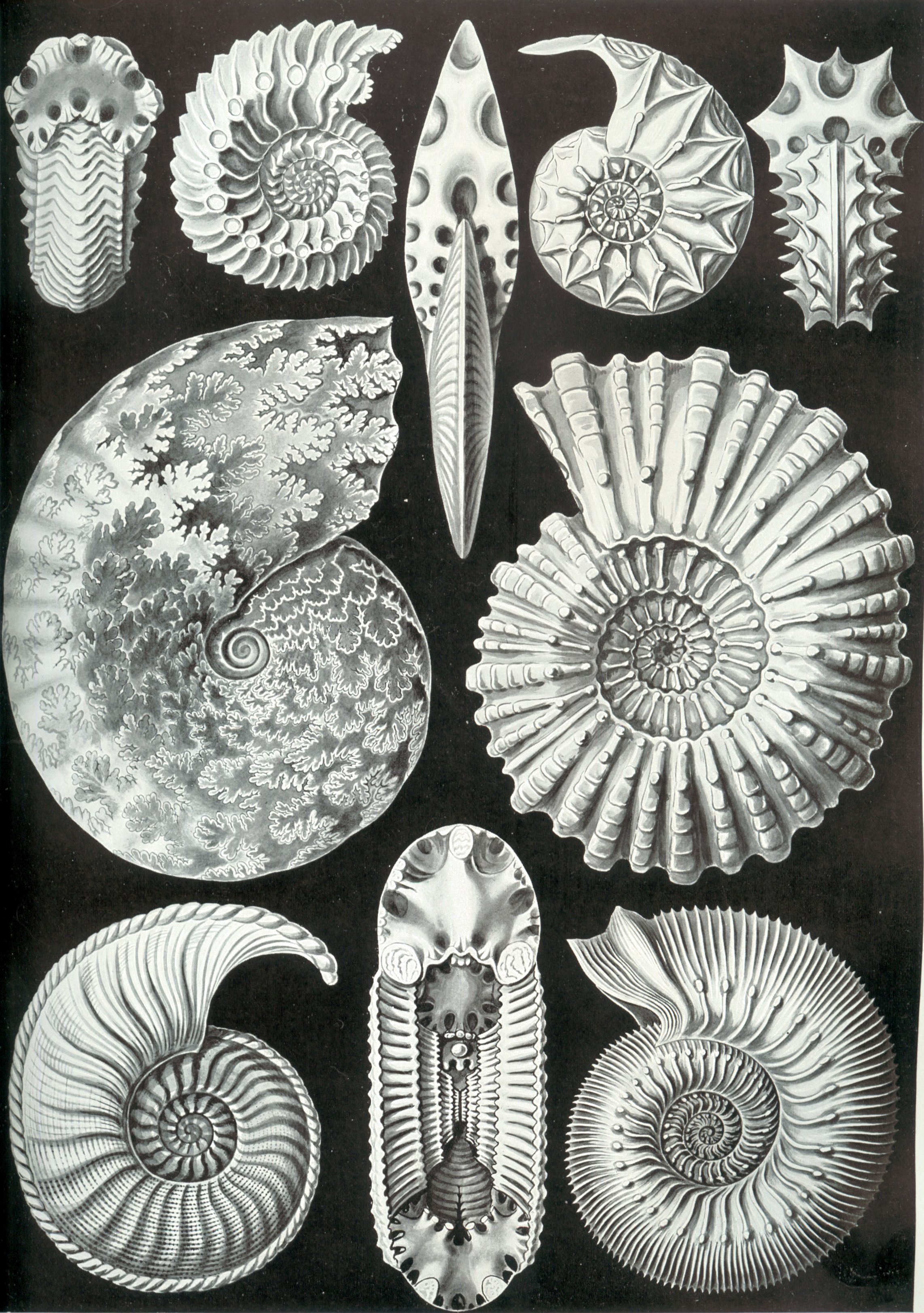Ammonites, though not the direct ancestors of modern-day cephalopods, are their ancient cousins--and they were the most successful cephalopods of all time, in terms of diversity and sheer abundance.

Ammonites from Ernst Haeckel's 1904 Kunstformen der Natur (Artforms of Nature).
What made them so successful? Well, maybe they were able to eat anything that got in their way. Modern cephalopods are successful generalist predators, so it could make sense to assume that ancient cephalopods were the same.
But it's hard to know for sure what any long-extinct animal really ate. Acts of predation are rarely preserved for posterity, and looking through fossilized stomach contents is a daunting task.
However, the fancy new technique of synchrotron x-ray microtomography has made it considerably easier.
Tomography means "sliced drawings" and it's done by using x-rays to scan through a 3-D object, creating a series of 2-D images that can be layered together to recreate a 3-D model. No physical slicing occurs, so the object remains intact. Microtomography just means it's very small. Basically, this is the same technique as a medical CT scan.
As for the synchrotron . . . well, it sounds like using x-rays from a sychrotron is just better. I don't really understand why, but that's what they say:
“X-ray synchrotron microtomography is currently the most sensitive technique for non-destructive investigations of internal structures of fossils. It started ten years ago with primate teeth, but is now widely applied in palaeontology,” says Paul Tafforeau (ESRF). “We made a first test on one of the Ammonite specimens after a test with a conventional scanner failed, and the results were so impressive that we scanned all the other available samples, discovering nearly each time a radula and for one of them and many other structures.”So they scanned all these ammonite fossils and recreated models of exactly what their mouths looked like with everything properly in place and aligned--rather than broken and scattered around, as fossils often are. From the paper abstract (where "buccal mass" basically means "mouth"):
Buccal mass morphology, combined with the coexistence of food remains found in the buccal mass, suggests that these ammonites fed on plankton.Did you catch that? They actually found fossilized plankton inside the fossilized mouths of fossilized ammonites! It's as if millions of years from now, your body is found with a fossilized bite of sandwich, and scientists use x-rays to look through that sandwich and determine that bread, lettuce, cheese, and peanut butter were all components of your diet. So cool!
However, it is also important to note that:
This diet may have extended to all aptychophoran ammonites, which share the same buccal mass morphology.So. At most, the planktivorous diet is ascribed only to a certain subset of ammonites--the aptychophorans. Aptychophora means "aptychus-bearing" and the aptychus is a peculiar piece of ammonite anatomy that people have been arguing over for years. Is it a jaw? Is it a door to close the shell? Who knows?
What about all those ammonites without aptychi--what did they eat? Maybe they were voracious predators on larger prey! I await future tomography results with bated* breath . . .
Kruta, I., Landman, N., Rouget, I., Cecca, F.,&Tafforeau, P. (2011). The Role of Ammonites in the Mesozoic Marine Food Web Revealed by Jaw Preservation Science, 331 (6013), 70-72 DOI: 10.1126/science.1198793
* I can't believe I spelled that wrong the first time. Thanks for the correction, Shawn.





Comments